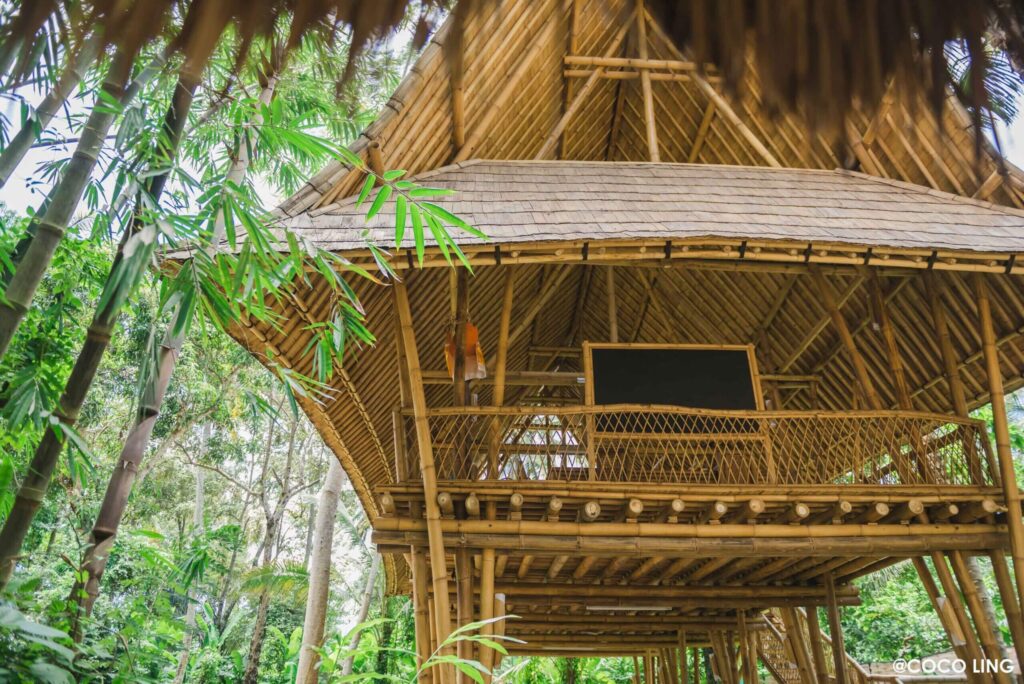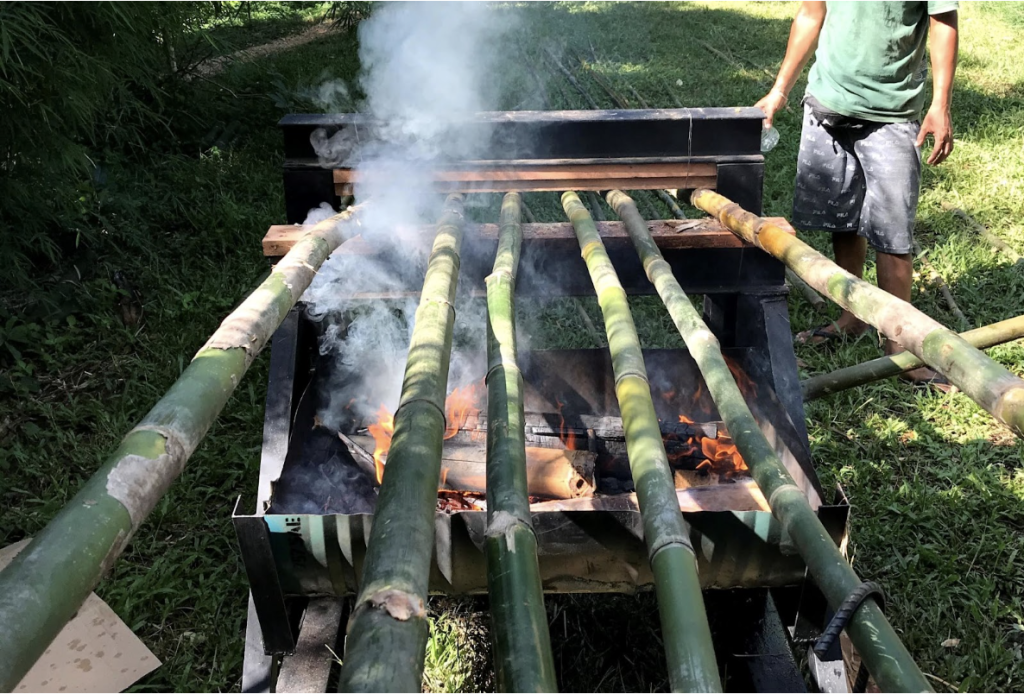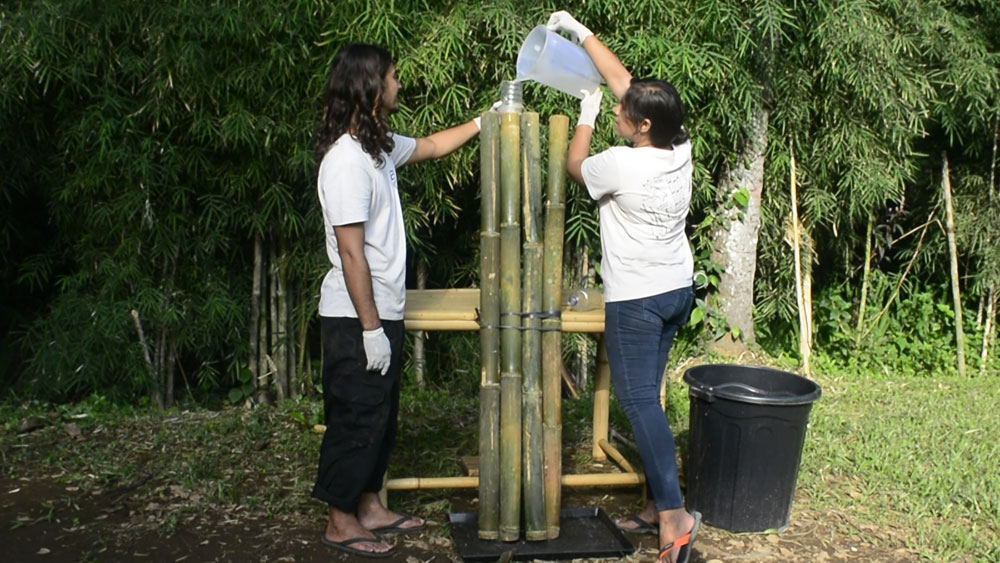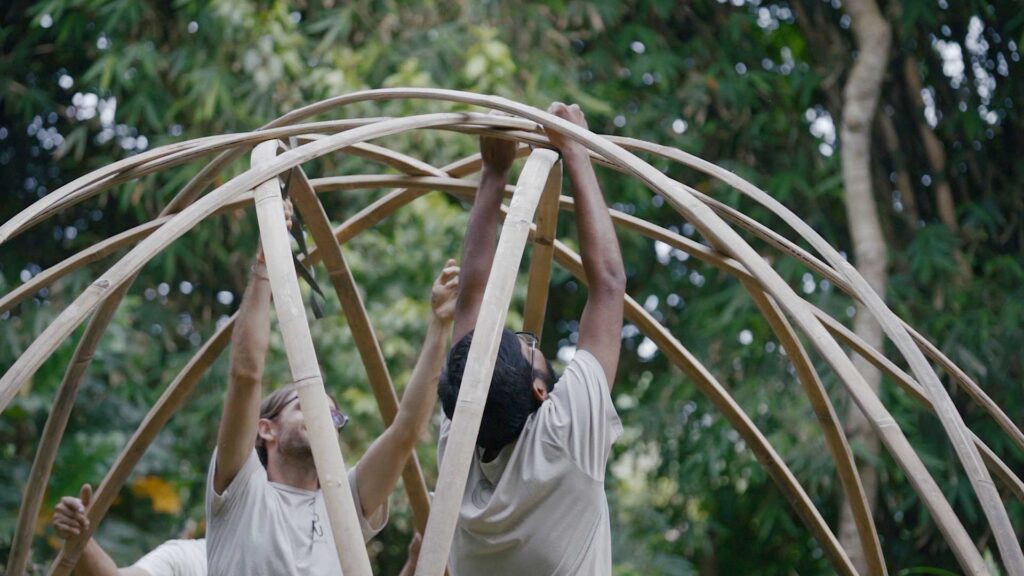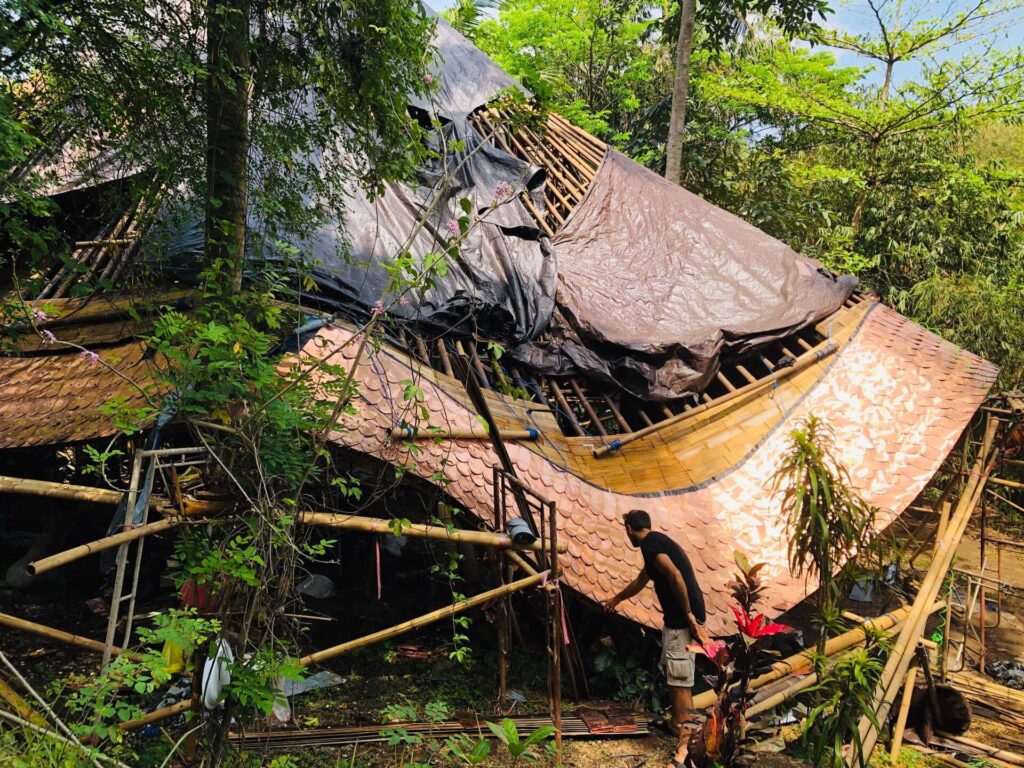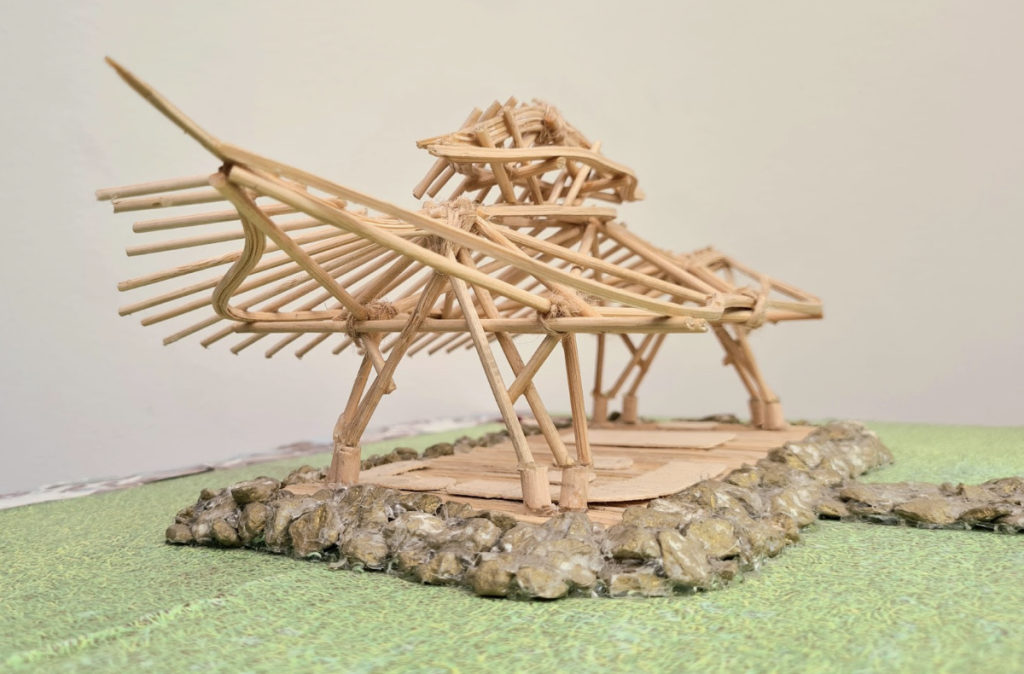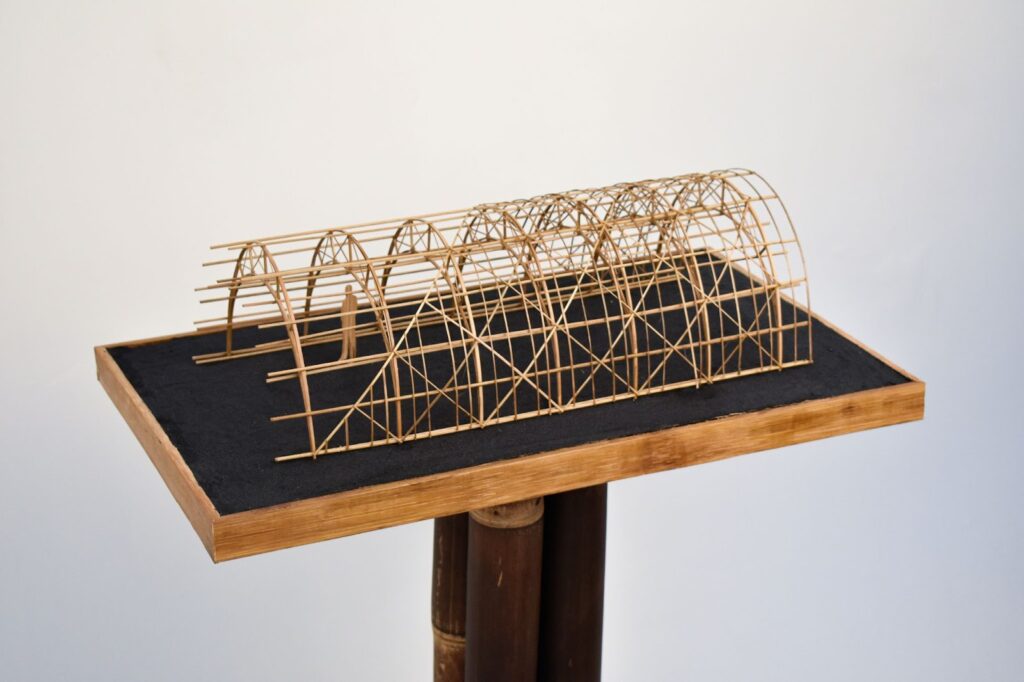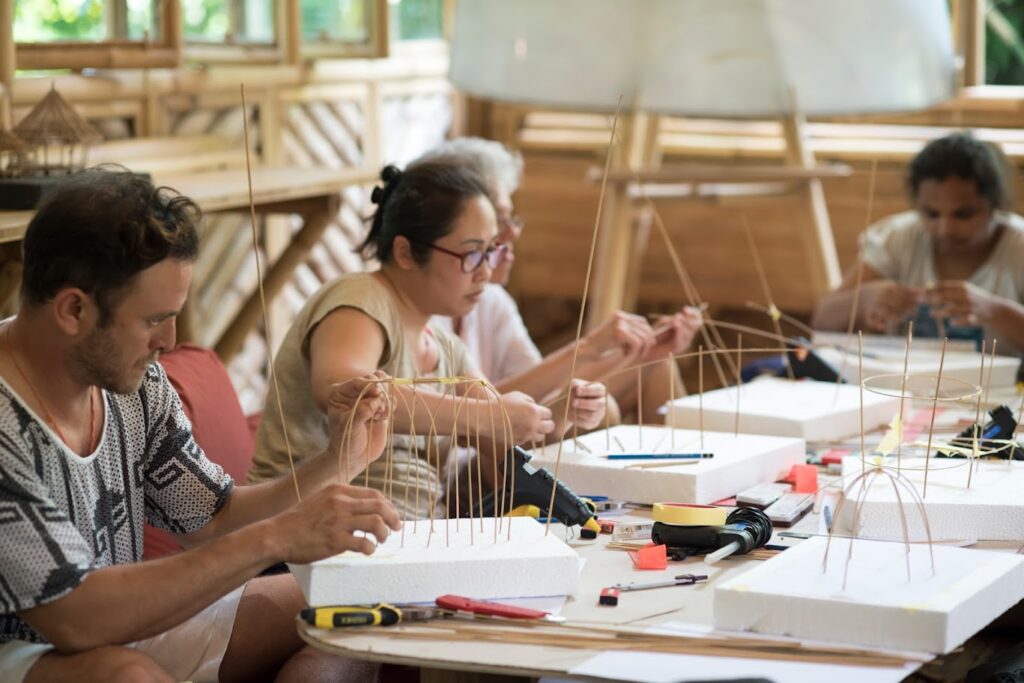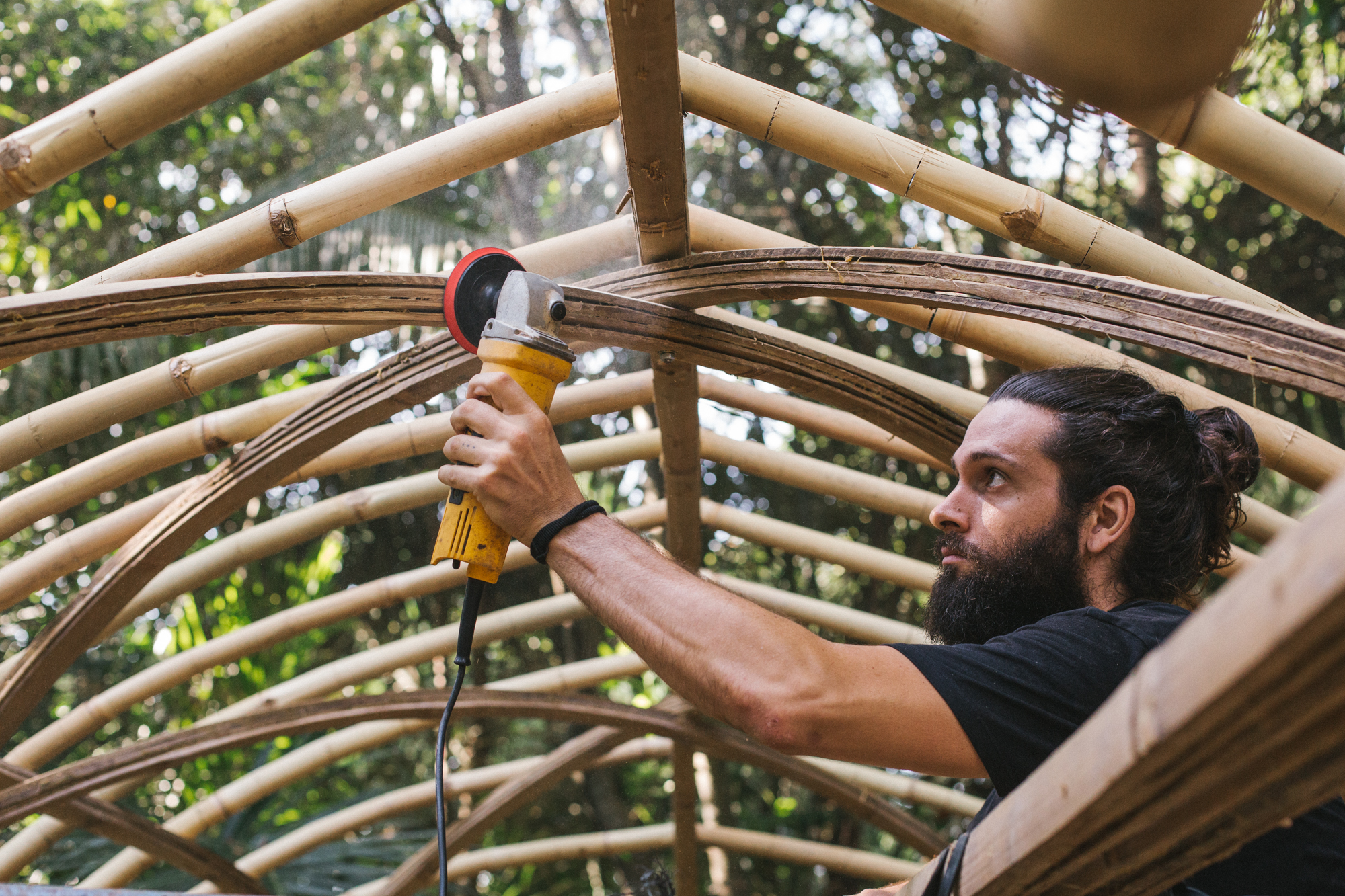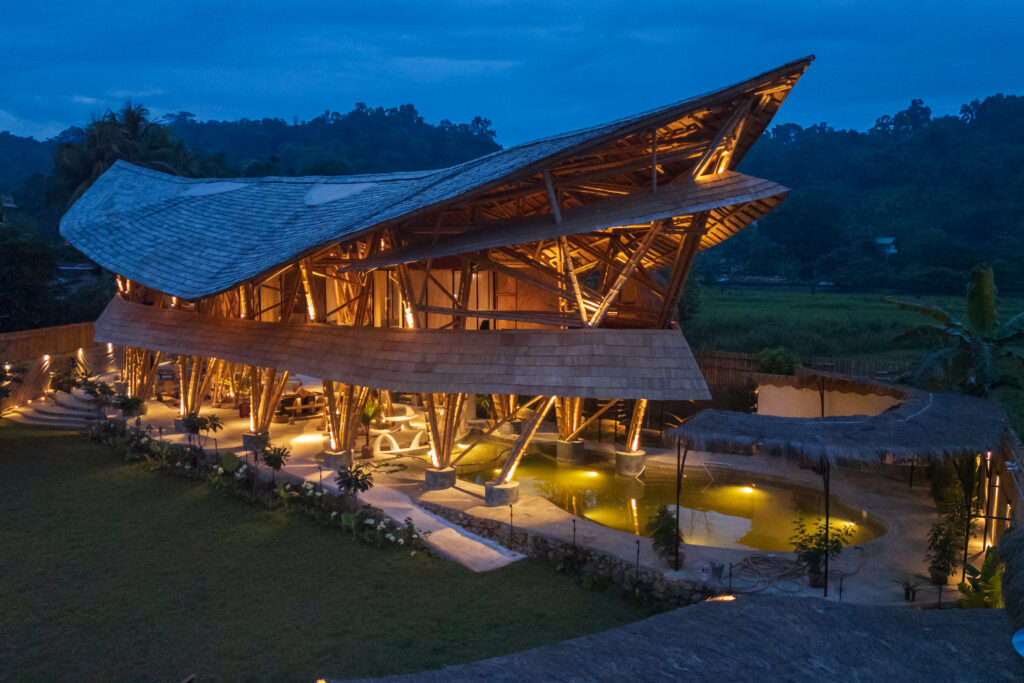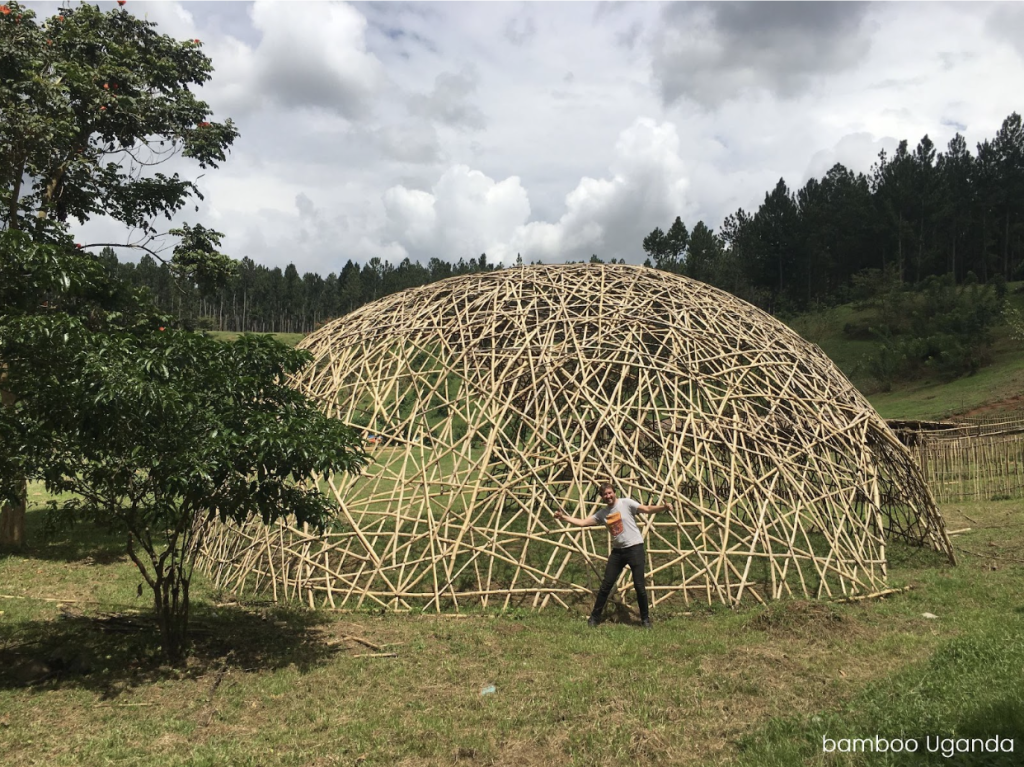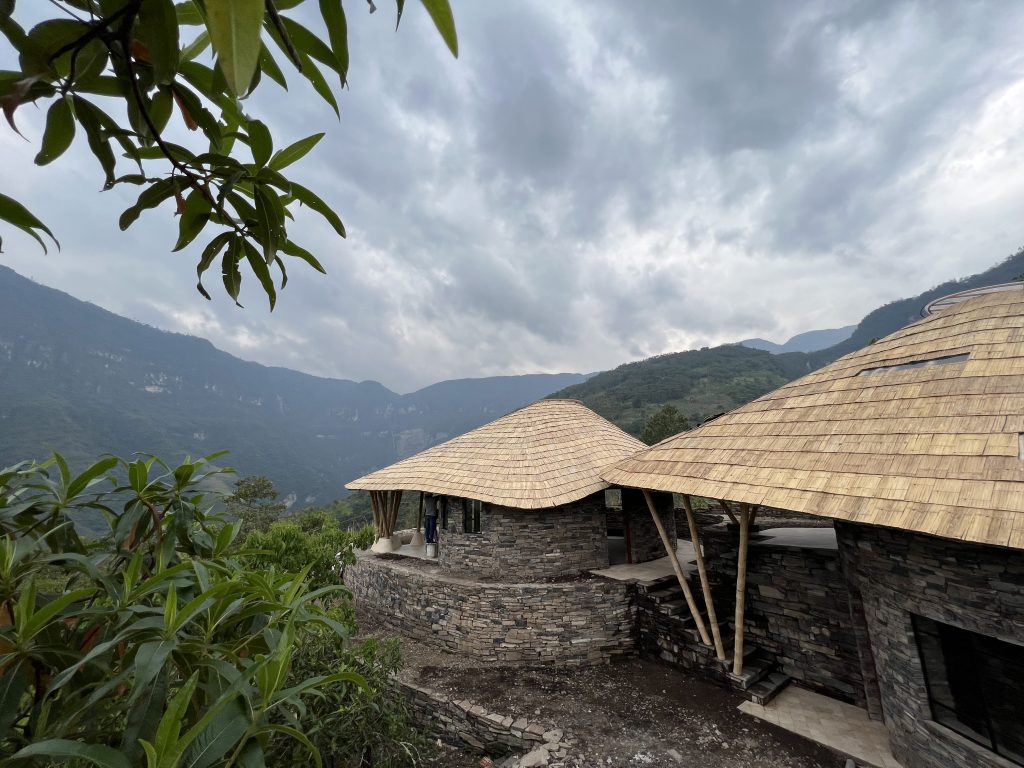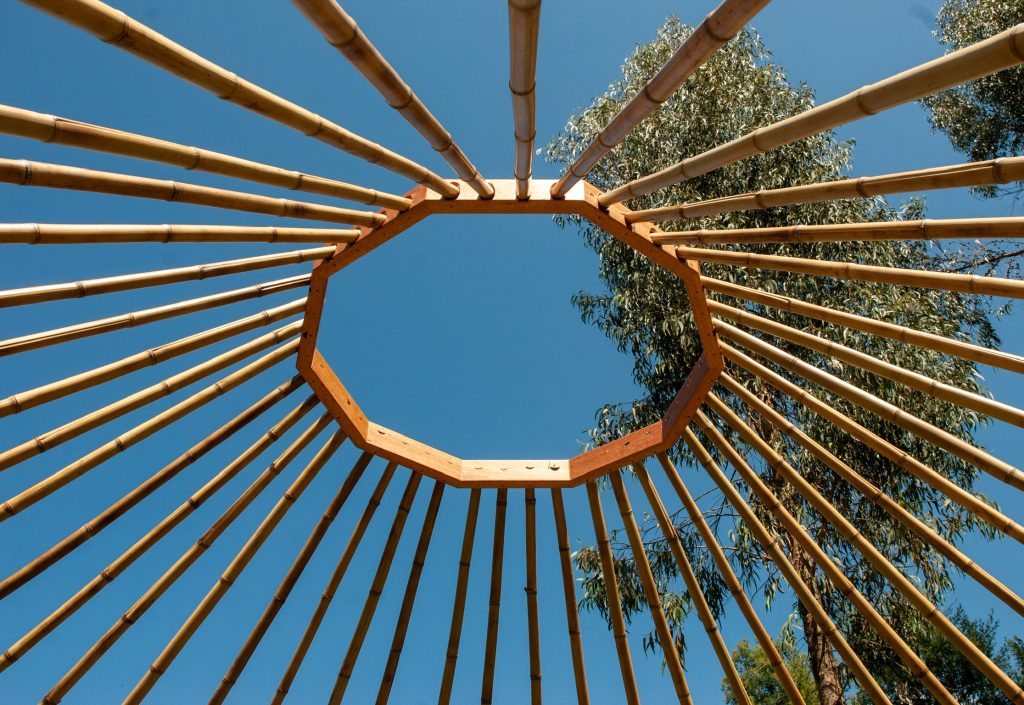Experiencing Thermal Delight in a Bamboo Dome
By | July 4, 2025 | Alumni Projects and Research -
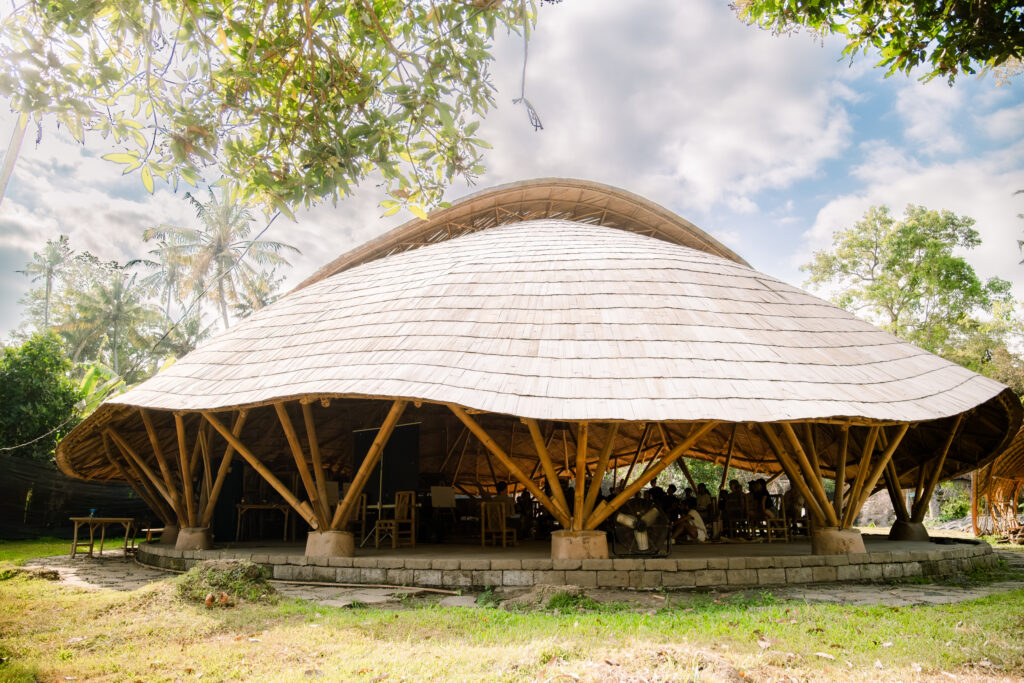
This article explores Marina's sensory-rich thermal experience inside a bamboo dome at Kul Kul Farm in Bali, contextualized through her on-site physical measurements of the thermal environment.
The appeal of the Bamboo Dome at the Kul Kul Farm lies not only in its graceful curves or the sustainability of bamboo as a material, but also in the coolness felt under bare feet, the slow shifts in air temperature as raindrops fall on the roof, and breezes that gently brush the skin. Although invisible, these layers of sensation envelope both the body and mind. The thermal environment created by bamboo architecture reveals a quiet yet powerful potential to touch human memory and sensibility. It demonstrates how thermal experience can become a form of joy, a concept known as thermal delight.
Related: Unique Approaches to the Use of Natural Materials
ASHRAE 55 is a widely accepted standard by the American Society of Heating, Refrigerating and Air-Conditioning Engineers. It defines thermal comfort as “That condition of mind which expresses satisfaction with the thermal environment.“
The definition emphasizes that thermal comfort is not simply the result of raw sensory input, but rather the outcome of an integrated psychological evaluation of those stimuli. This results in a state of satisfaction. This perspective has been fundamental in architectural and ergonomic research for decades, as thermal comfort plays a crucial role in supporting healthy and productive environments.
Two Approaches to Thermal Comfort
There are two primary approaches to comfort in architectural environments.
This article will focus on the second type of comfort, especially a form of thermal pleasantness that carries architectural and artistic significance, which is described by the term thermal delight.
The Concept of Thermal Delight
The concept of thermal delight was introduced in the 1980s by American architect Lisa Heschong. She describes it as follows:
Theremal delight can be observed in daily experiences, such as the transition from a hot sauna to a cold plunge. It is a moment that awakens both body and emotion. This kind of contrast offers a rich sensory experience that cannot be fully captured by quantitative data alone.
Sensations like these expand the possibilities of architectural design. They encourage designers to not just eliminate discomfort, but to intentionally create experiences that bring joy through thermal qualities.
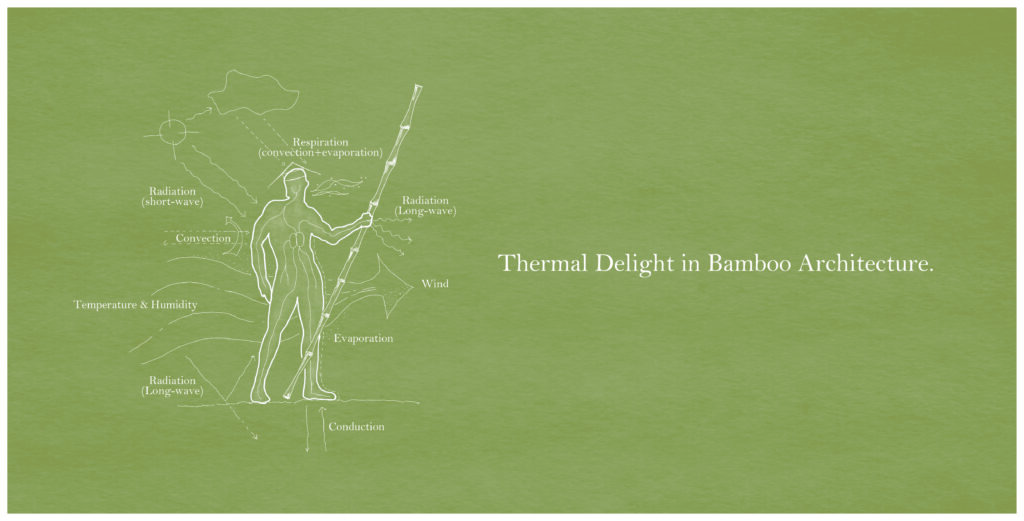
On the day of my visit to the Kul Kul Farm, the outdoor climate was characteristically tropical, with temperatures ranging from 30 to 34°C and humidity levels between 85% and 100%. Under these conditions, even standing still would make one sweat. However, inside the bamboo dome, the atmosphere was consistently comfortable and natural. The consistent airflow and materiality adapted subtly to various times of the day. I noticed this was not a one-off occurrence, but a recurring experience throughout the 11-Day workshop.
On another day, as the rain began to fall, the air cooled rapidly. At this time the dome was filled with a refreshing chill. The combination of this temperature shift, the scent of the rain, and dimmed light created a multisensory experience that made the space feel alive.
Related: It’s Time for Architects to Rediscover Natural Materials
Design Characteristics that Contribute to Thermal Delight
The dome is open around its perimeter and establishes strong thermal and visual continuity with the surrounding environment. Wind enters freely from all directions and is perceived as gentle breezes on the skin. The fluctuating rhythm of the natural wind creates a kind of sensory dialogue with nature. In moments when the breeze pauses, the sensation of heat intensifies. This makes the return of the breeze feel even more refreshing.
The lime flooring, with its high thermal mass, offers a notable cooling sensation through direct contact. When touched with bare hands or feet, the surface gradually absorbs body heat, providing a subtle but effective contrast to the ambient warmth.
Particularly memorable were moments when opposing thermal sensations coexisted. For instance, sunlight from the skylight warmed the face while the floor remained cool to the touch. Although such contrast might typically result in discomfort, in this setting it heightened bodily awareness and fostered a unique sense of pleasure, thanks to the interplay between natural materials and environmental variation.
Even the walk to the dome contributed to the overall experience. The heat absorbed by sunlit paving stones acted as a form of “positive stress.” Consequently, this made the coolness of the interior feel even more pronounced and satisfying upon entry.
Through these accumulated experiences, I came to realize that heat is not merely a physical quantity. Instead, it can serve as a medium of sensibility, linking the human body to the architectural space. Within the bamboo dome, thermal delight, experienced as joy through heat, was unmistakably present.
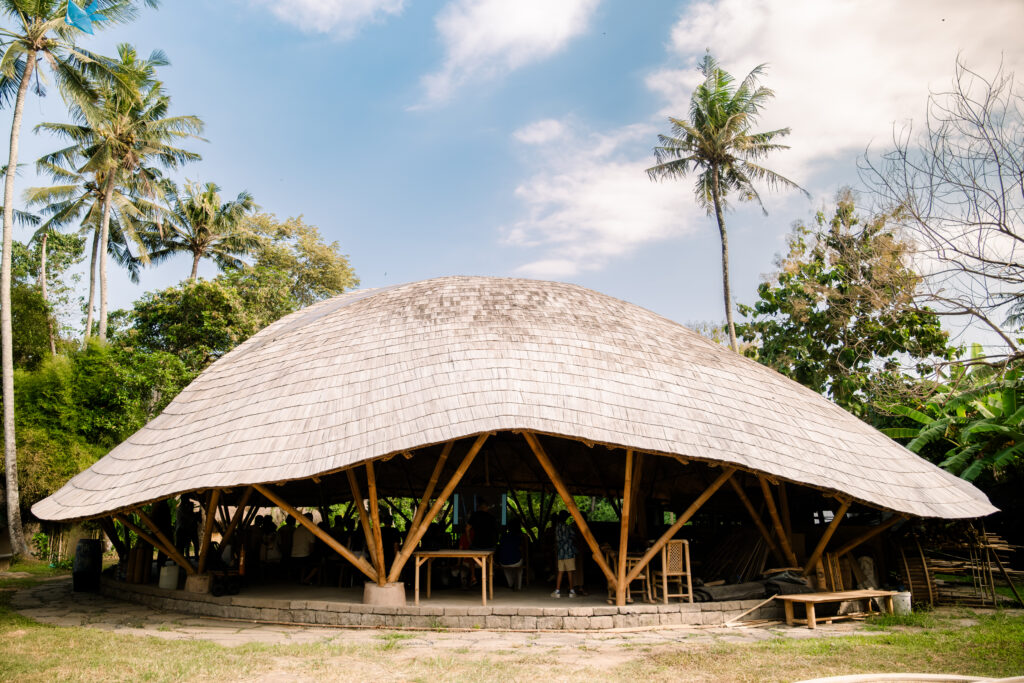
Related: What Properties Make Bamboo an Excellent Material for Construction?
The sense of comfort experienced inside the dome was not only subjective to my experience. On-site thermal measurements revealed the architectural and environmental mechanisms that supported it.
On the day of observation, although the indoor air temperature was comparable to the outdoor temperature, the mean radiant temperature inside the dome was approximately 10° to 13°C lower. This was a result of the shading provided by the large bamboo roof and the skylight filters.
A particularly significant finding was that the Standard Effective Temperature (SET), an index that represents perceived temperature, was on average 2.3°C lower than the air temperature. This aligned well with the subjective experience of coolness.
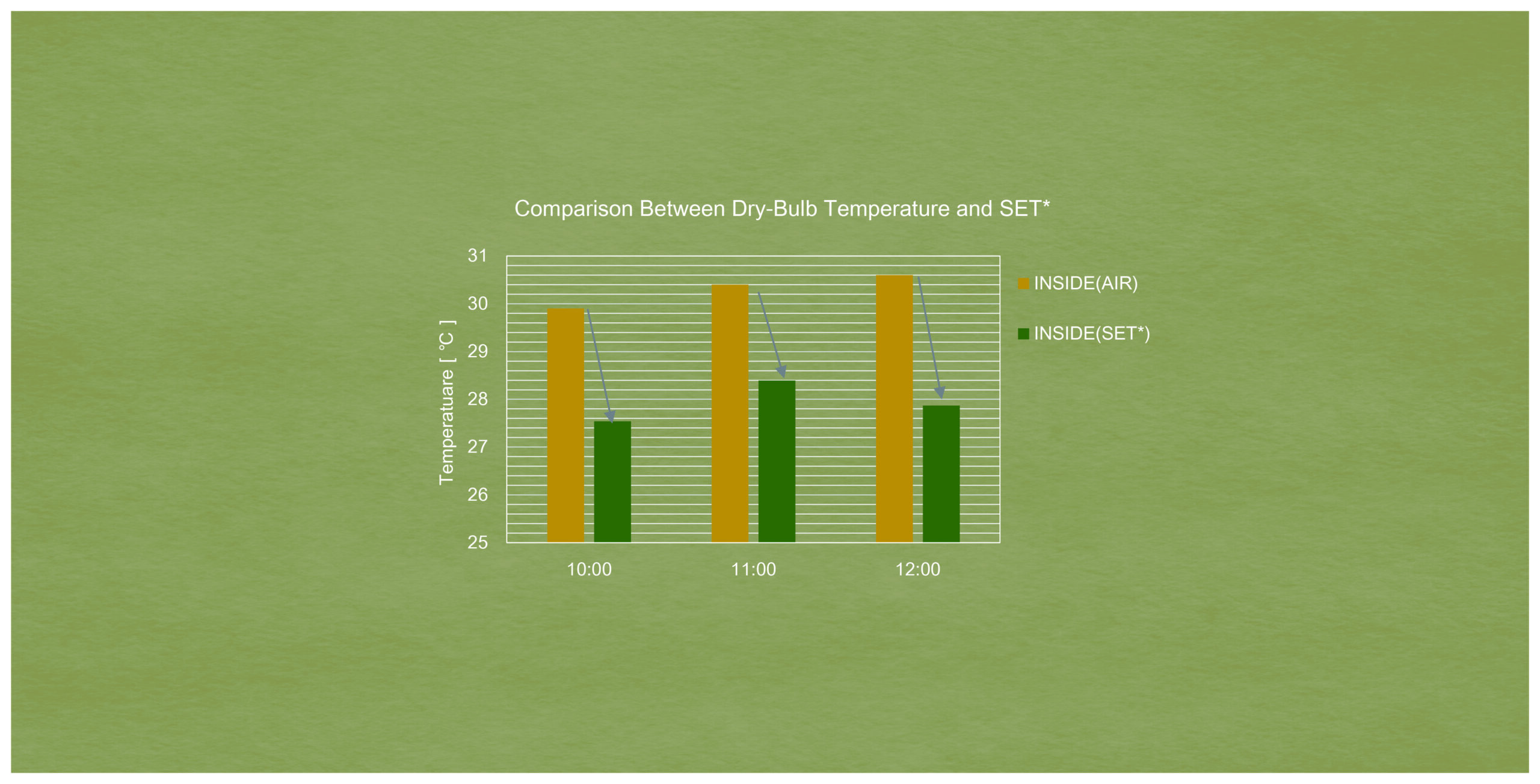
Two key thermal factors are considered to have significantly contributed to the reduction in SET:
Below, one can find a thermographic image taken inside the dome, showing the surface temperatures of various components.

The diagram illustrates how the architectural strategies designed to suppress radiant heat, from both the floor and ceiling surfaces, play a major role in enhancing the thermal environment within the occupied zone.
Factors Influencing Thermal Comfort
The deep bamboo roof effectively blocks direct solar radiation, and the additional bamboo layer over the skylight significantly reduces solar gain indoors. Additionally, the lime floor, which has a high thermal mass, resists temperature increases even during the daytime. This maintains surface temperatures lower than the ambient air.
Moreover, when a person is seated, the view factor (the proportion of floor surface visible from the body) becomes relatively large, which means that cool radiant heat from the floor has a stronger effect on the body. This contributes to a gentle cooling sensation that rises from the feet, which helps maintain the overall thermal comfort of the space.
Radiant heat from the roof is also effectively minimized. The dome’s structure features a high, curved ceiling. This ensures that the distance prevented the heat from radiating down into the occupied zone.
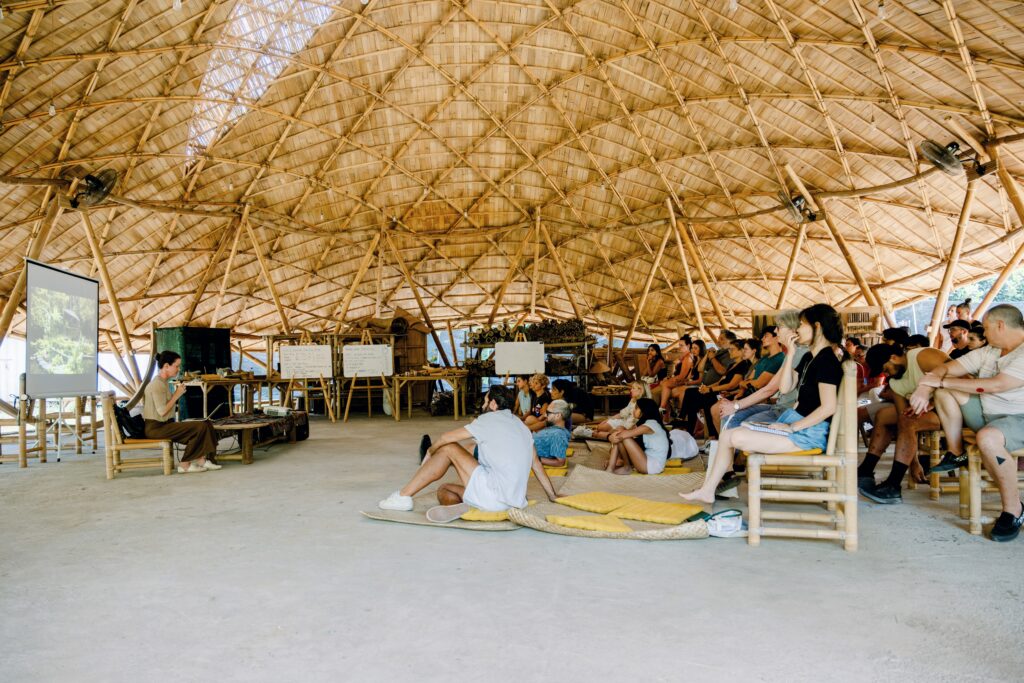
Another notable observation was the temperature gradient of up to 13.7°C, measured between the ceiling and the floor. This thermal difference created ideal conditions for natural ventilation via the stack effect. In these instances, warm air accumulates near the top of the dome and is discharged through high openings, while cooler, fresh air flows in from the open perimeter. This natural airflow cycle helps prevent stagnation or thermal stuffiness. Instead it generates a refreshing sensation, as if “living air” is constantly circulating through the space.
On days with minimal wind, a circulator fan is used as a supplementary measure. The gentle downward airflow helps prevent the floor from overheating. It also enhances evaporative cooling at the skin surface, which results in a more perceptible cooling effect.
Finally, during the data collection period, the average airflow speed ranged from 1.0 to 1.5 m/s. Its non-directional, enveloping quality appeared to further enhance the spatial comfort.
In this way, the delicate thermal experience, woven through natural conditions and intentional architectural strategies, evoked a form of thermal delight that was emotionally engaging and deeply memorable.
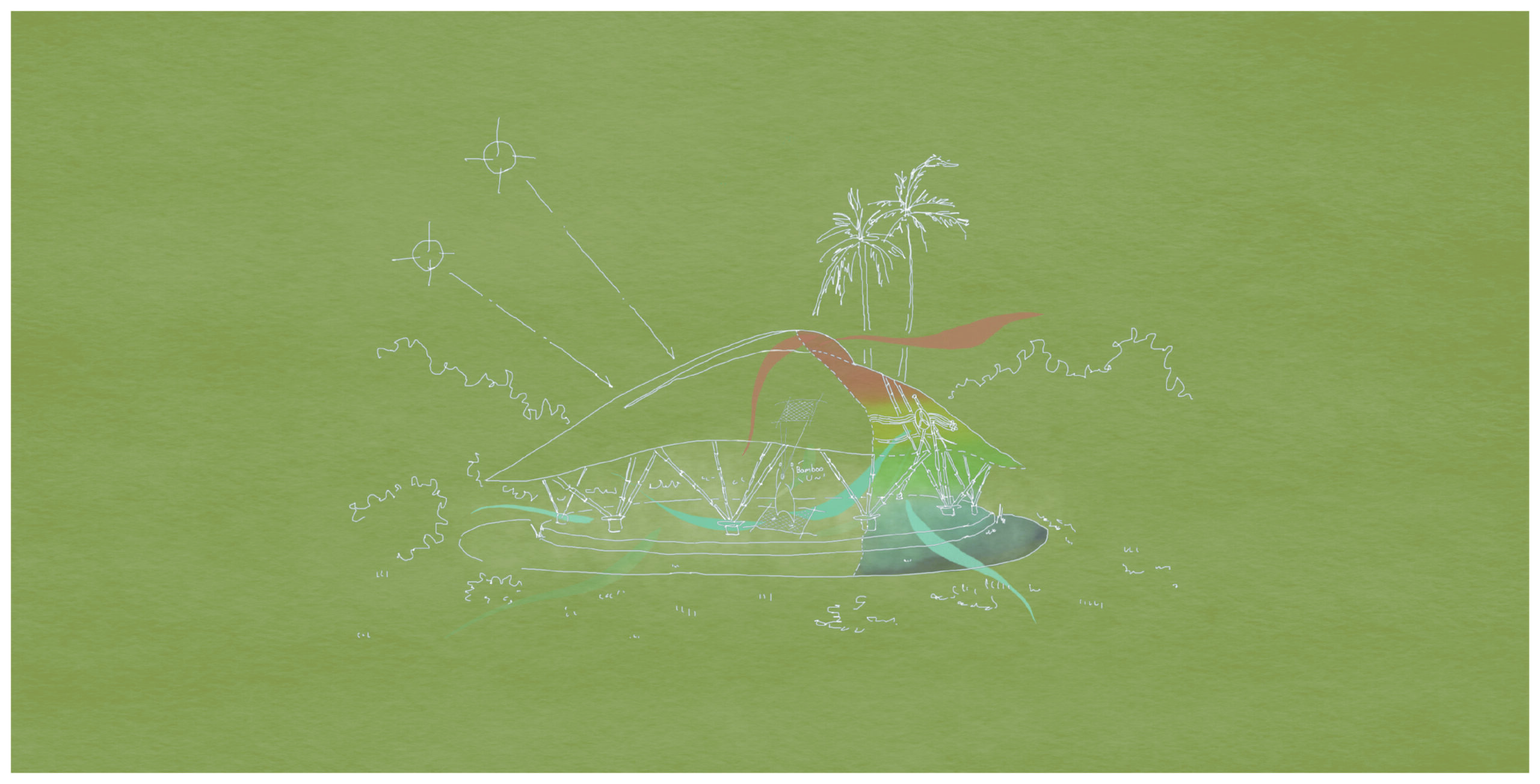
It is important to recognize that these results were obtained under specific conditions. Therefore, they should not be interpreted as universally applicable. Thermal perception varies greatly depending on individual differences such as gender, metabolic rate, and cultural background. As a result, defining who the intended users are becomes a critical part of thermal design. Moreover, thermal comfort is affected by activity level and clothing. Therefore, the thermal environment must be designed in alignment with the actual usage scenarios of the space.
In order to enable more people to enjoy emotionally evocative thermal experiences in spaces built with bamboo or other natural materials, there are two approaches of data collection that are effective:
Therefore, both the quantitative and qualitative data will help expand the definitions of comfort that are unique to bamboo architecture.
As the data is accumulated, it can be applied to material selection and spatial design in other regions. This way, thermal delight, which represents a form of sensory thermal comfort, can be incorporated into practical architectural design.
By integrating these elements, architecture can aim not only to achieve energy efficiency and carbon neutrality, but also reaffirm the emotional connection that exists between people and the spaces they inhabit through a diversity of thermal experiences.
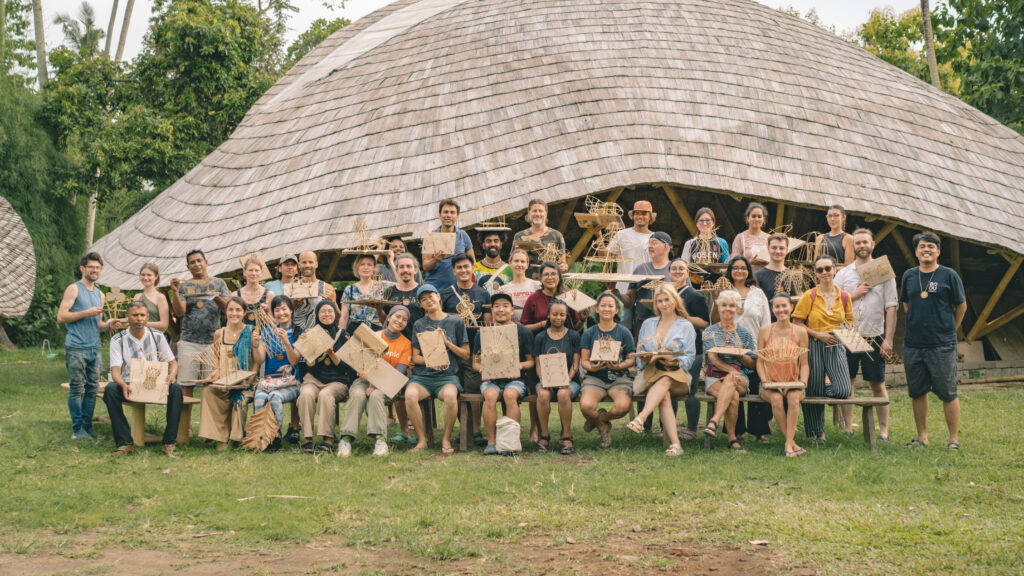
The time spent inside the bamboo dome at the Kul Kul Farm offered a deeply emotional thermal experience that revealed how closely architecture is tied to human sensory experiences. The bamboo structure’s ability to respond to nature, along with the thermal conditions it created, resonated with both the body and the mind.
Through intentional design and the use of natural materials, heat was transformed from a simple physical stimulus into something emotionally impactful. The space felt alive, as it interacted continuously with the environment through the flexibility and breathability of bamboo. I was moved by how gently such a space could stir human sensibilities, bringing a sense of calm and peace.
Ultimately, this experience points to the potential of regenerative architecture that enriches the life of its occupants by engaging in meaningful dialogue with nature. The thermal environments shaped by bamboo architecture influence memory and emotion. This form of architecture offers a glimpse into a future where people and nature live in deeper harmony.
Are you interested in designing and building your own bamboo structures that evoke thermal delight? Join us in-person or online for one of our workshops HERE!


